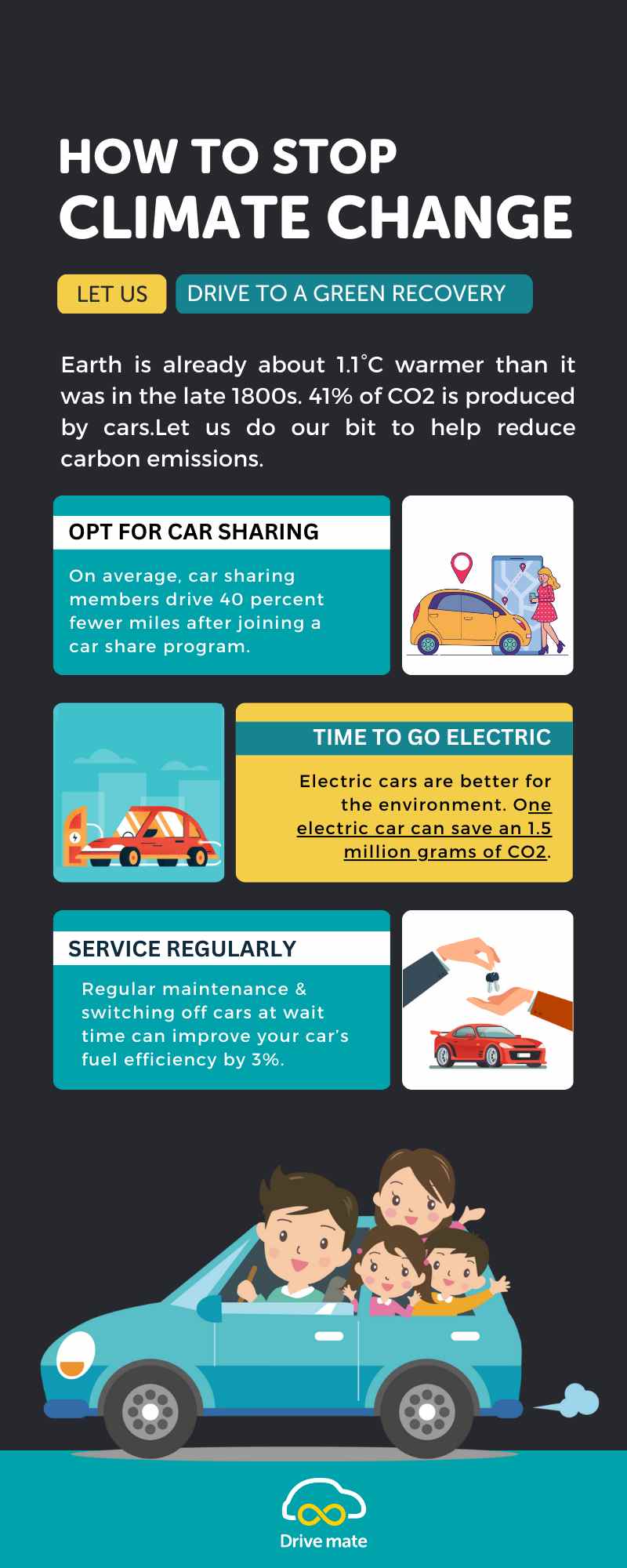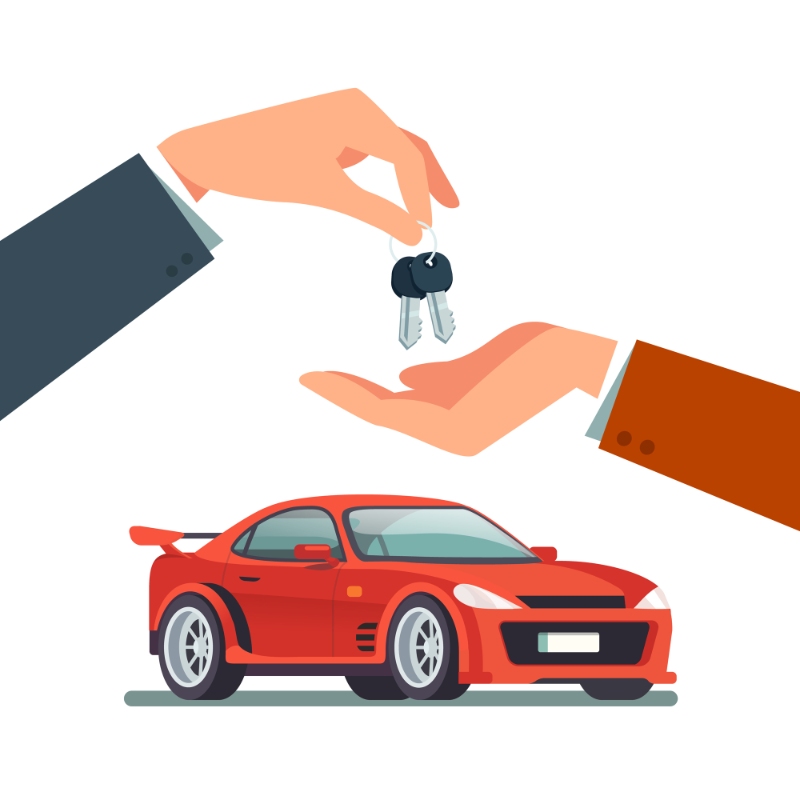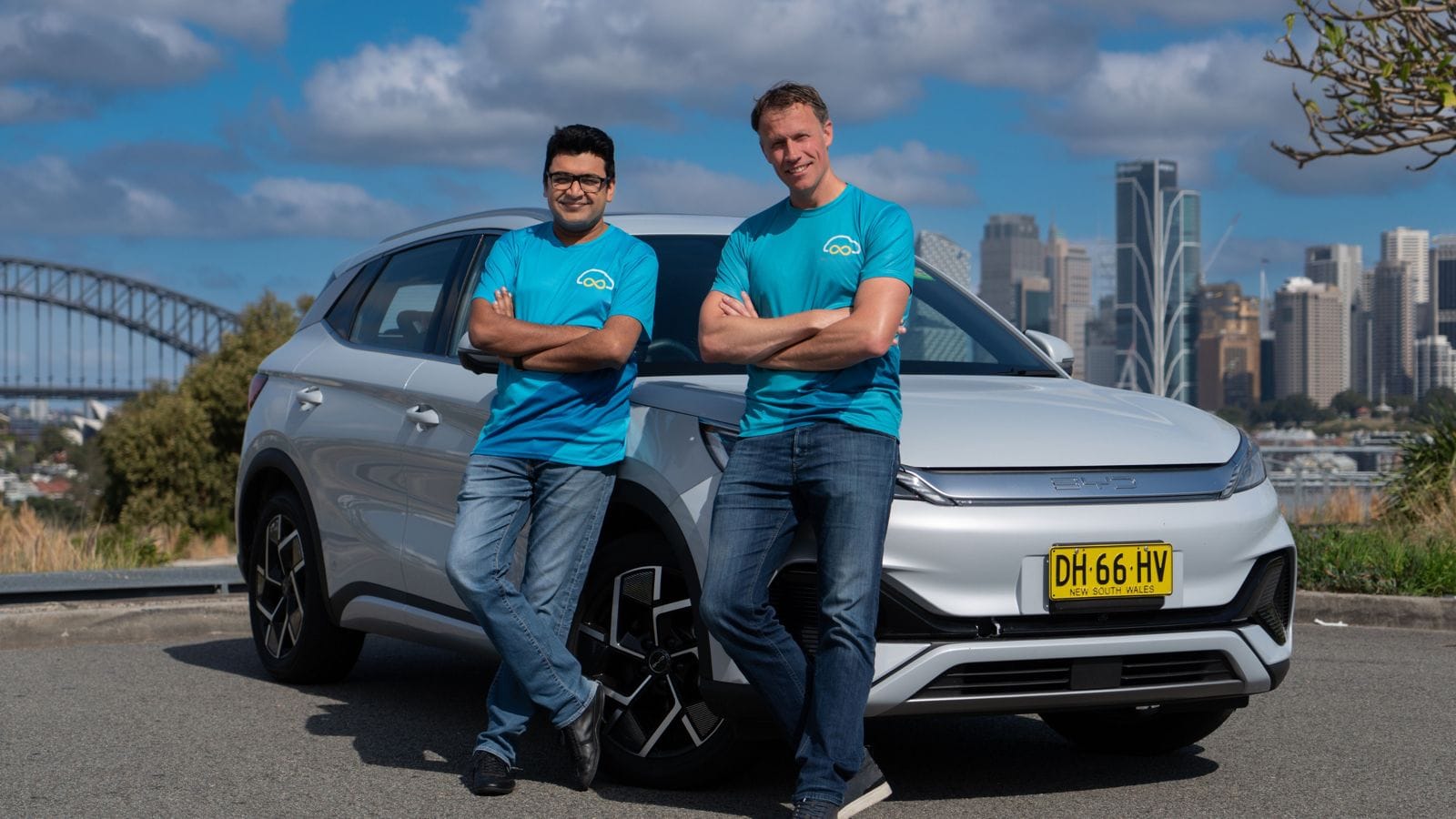Transportation is a significant contributor to greenhouse gas emissions, with the majority of emissions coming from cars and trucks.

To reduce carbon emissions in the transportation sector, several solutions can be implemented.
Opt for Car Sharing
Car sharing can have a positive impact on carbon emissions by reducing the number of cars on the road and the number of miles driven. When multiple people share a car, it reduces the need for each person to own their own vehicle, which in turn reduces the number of cars produced and the amount of fuel consumed.
Want to rent a car? Here is a step-by-step process to help you choose a car on Drive mate.
Choose Electric & Hybrid Vehicles
Increasing the use of electric vehicles (EVs) and hybrids, which produce significantly fewer emissions than traditional gas-powered vehicles.
EVs are powered by electricity, which can be generated from a variety of sources, including renewable energy sources such as wind and solar power. As a result, the emissions associated with EVs depend on the source of the electricity used to charge them. When charged with electricity from a clean energy source, EVs produce significantly fewer emissions than traditional gas-powered vehicles.
Hybrids combine an internal combustion engine with an electric motor and battery, which allows them to use both gasoline and electricity to power the vehicle. This results in improved fuel efficiency and reduced emissions compared to traditional gas-powered cars.
Both EVs and hybrids reduce the dependence on fossil fuels, which are a major source of carbon emissions. In addition, EVs and hybrids can also reduce emissions associated with the transportation sector, particularly in urban areas where air pollution is a significant problem.
Use the public transportation systems
By providing an alternative to personal vehicle use, public transportation can reduce the number of cars on the road. This can lead to fewer emissions from cars and trucks, as well as reduced traffic congestion and improved air quality.
Public transportation systems can often transport more people at once than private vehicles, which means that the same number of people can be moved with fewer vehicles. This can lead to a significant reduction in emissions per person.
Many public transportation systems, such as buses and trains, are powered by electricity, which can be generated from clean energy sources such as wind and solar power. As a result, the emissions associated with public transportation depend on the source of the electricity used to power them. When powered by clean energy, public transportation produces significantly fewer emissions than traditional gas-powered cars.
Also Read - Maximizing Your Rental Car Experience with Drive mate in Australia
Go Car Pooling

Carpooling and telecommuting reduce the number of vehicles on the road. Carpooling reduces carbon emissions by decreasing the number of cars on the road, which in turn reduces the amount of fuel consumed.
When multiple people travel together in one vehicle, it means that fewer cars are needed to transport the same number of people. This leads to fewer cars being produced and less fuel being consumed. Additionally, when cars are occupied by multiple people, they are operating at a higher capacity, which can make them more fuel efficient.
Carpooling also reduces the number of miles driven, as multiple people are traveling to the same destination, which further reduces the amount of fuel consumed and emissions generated.
Furthermore, carpooling can also reduce traffic congestion, which can also contribute to lower emissions by reducing the amount of time spent idling in traffic, another source of emissions.
Maintain and Service Regularly
Maintaining and servicing your car can help to reduce carbon emissions. Properly maintaining your vehicle can improve its fuel efficiency, which in turn reduces the amount of carbon emissions it produces. Additionally, regular servicing can help to identify and fix any issues that may be causing the vehicle to emit more carbon than it should.
Want to know why Drive mate is the best car-sharing app in Australia? Read to find out!

How to reduce carbon emissions when you own a car?
There are several things you can do to reduce your car's carbon emissions.
Properly maintain your vehicle
Regular maintenance can improve your car's fuel efficiency and reduce emissions.
Use the most efficient route
Plan your routes to avoid traffic and take the most efficient route to your destination.
Avoid excessive idling
Turn off your engine when you're stopped for more than 10 seconds, it will help to reduce emissions.
Use public transportation, carpool or bike when possible
Reducing the number of cars on the road can significantly reduce emissions.
Drive efficiently
Avoid aggressive driving, such as rapid acceleration and braking, which can decrease fuel efficiency and increase emissions.
Keep your tires properly inflated
Properly inflated tires can improve fuel efficiency and reduce emissions.
Use eco-friendly fuel
Using alternative fuels such as biofuels or electric vehicles can help to reduce emissions.
It's important to note that reducing emissions from the transportation sector will require a combination of policy, technological, and lifestyle changes. By following these steps, you can help to reduce your car's carbon emissions and do your part in protecting the environment.
Drive mate is a peer-to-peer car-sharing Drive mate app in Australia. You can rent affordable cars nearby at great value.
Also Read - The Carbon Footprint of Car Sharing vs. Car Ownership


